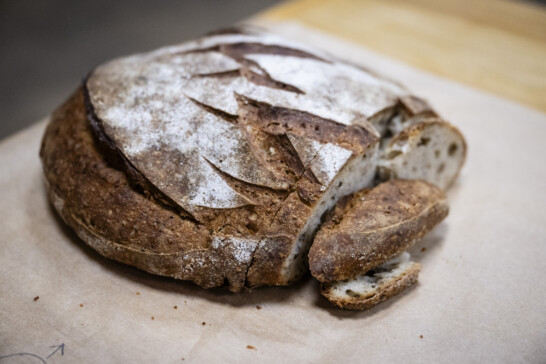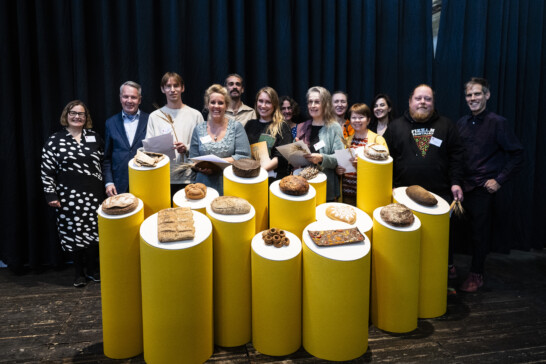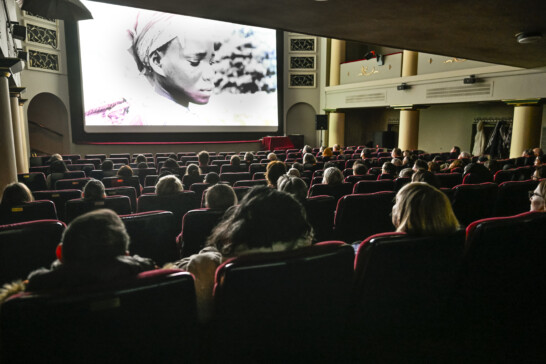News
Art, science and curating PART 2

What do we do when we curate? (continues from Part 1)
UT: Independent curating has a short history in Finland, and the same goes for curatorial education. From personal experience I remember that in the early 2000s it was kind of an odd position to present yourself as a curator that does not work for an institution.
PT: I also studied curating, namely at the De Appel Foundation as early as 1996-97. Since then I have been curating exhibitions in collaboration with art institutions. I have also curated biennial participations and shows in a variety of contexts. I worked at Frame Finnish Visual Art for nine years as a curator and there my work was a combination of institutional curating, which meant selecting existing works for exhibitions, but I was also commissioning works for public spaces already then.
I agree that the practices of independent curating and curating commissioned works are late arrivals in the Finnish context compared to many other European countries. At the same time we should remember that there are exceptions like Timo Valjakka, my expert team colleague from IHME 2009-2019, who has been working as an independent curator regularly since the 1990s.
As for works commissioned by Finnish museums, I remember that the first occasion that Kiasma commissioned a work for its collection was as late as 2011. That first commission was co-produced with IHME, namely the third IHME Project by Superflex, Modern Times Forever (Stora Enso Building). But for sure there has been commissions made well before this one. However, it is a different kind of curating when you curate new works in close collaboration with artists. It’s very different from selecting finished works for an exhibition with a certain theme or idea.
UT: Totally! There is a big risk when you have nothing but a conceptual vision to start with. Also the discussions we had with funders were different ten years ago; you needed to explain that we have this concept and vision, but no work yet, which was not so easy to grasp. Many things have changed, partly also due to the curatorial programmes at Aalto University and the Fine Arts Academy of the University of Arts, which have changed the scene here in Helsinki and in Finland.
PT: Yes indeed, there is much more diversity among curators in Finland, which is great. We definitely need many voices and different kinds of curatorial approaches both in art institutions and outside of them. This is how we can learn from each other and reach out to diverse audiences.
EB: It is interesting to see what curators can do nowadays. A really good example in Finland is the Museum of Impossible Forms in Kontula, Helsinki. Also the work of the Bioart Society happens through a curatorial process: we provide a conceptual framework and facilitate the artists within, so they can do their work in dialogue with us.
Now as we have just been finishing our 10th anniversary publication, I was reminded that editing a book is a process very similar to curating. In the coming years our exhibition programme will also aim to strengthen the curatorial component: artists will work with curators in our gallery space, where they can experiment and learn together through practice. There is a lot of special knowledge, expertise and attention necessary when curating in art & science or bioart, for example about working with living materials in the gallery and its public setting or in a workshop context.
Curators need to be aware of the ephemeral nature of life. They must think about and provide the necessary care for the living material, but also be aware of biosafety or the legislation on genetically manipulated organisms. Also in such works the technology is not a means or a tool but a medium, and thus uninformed aesthetically motivated decisions can easily bend the meaning of the work. There are different stages in biological art and one of them is death. All this needs to be considered when working with audiences. It is not a trivial matter.
PT: Indeed. This reminds me of IHME Projects like Jeremy Deller’s Do Touch (2015) or Kateřina Šeda’s Tram Buskers’ Tour (2016) where the key part of the work was performed by living organisms that we call human resources, people (laughing). These works emphasize the meaning of the encounter between people, between the audience and the work, where the “material” may be museums guides and art educators (Deller) or musicians (Šeda). This kind of work also needs to be taken care of and maintained and you need eg knowledge of work safety. We need to take care of the people that are creating the situation that is the work.
Curating is selecting… but also more
PT: Selecting is assumed to be the most elemental part of curating: selecting artists in order to commission a work or for a research programme or selecting art works in an exhibition or collection. Selecting is also the activity where the power but also the responsibility and expertise of the curatorial work becomes visible, I think, in all curating.
For me, the curatorial role, as regards selection, is often the most rewarding when it is done collectively. The conversation and sharing of ideas and viewpoints makes curating a collective learning process and the decisions made are very different from what each member of the group would make individually. This is an essential feature of IHME: since the very beginning we have had five people in an expert team that selects one artist for each year.
Now that we have a new Advisory Board (which, unlike the previous one, is independent from the foundation’s board) we are again five people, but with different professional backgrounds, and we continue selecting the artist together. After the selection I present the invitation and start the conversation with the artist on the collaboration. We are refining the selection process now so that we ask for project proposals from a few artists first and make a selection based on these. Let’s see what we learn from that.
EB: I think this is a really good setup. It is difficult solely for the organisation’s board to have all the needed expertise.
PT: How do you make selections at the Bioart Society and what exactly is your curating model?
EB: Most of the selections are based on open calls. Depending on the content, different groups do the selecting. The residency programme is handled in house by Pirita Puhto, our curator and senior producer, and I make a pre-selection to sort out the applications which are not feasible. The rest we draft into a proposal that is given to our board for review.
Some exhibitions are selected internally but others come through projects like with artist Christina Stadlbauer or Emilia Tikka and the Tokyo art&science residency. They were selected in collaboration with all the partner institutions, a process we mostly follow when collaborating. Their exhibitions are based on very good results from their residency, which they will be showing at the SOLU Space.
We use open calls as much as possible also for Field_Notes, where the participant selection is done together with the group hosts. The group hosts are the facilitators of the working groups in Kilpisjärvi. They can be artists, scientists or other practitioners choosing their fellow group members.
UT: Open call is a good way to give the programme visibility internationally and it also gives you insight on what is happening right now. I must say I was a bit overwhelmed this autumn with open calls. Capsula organised an open call with support of The Saastamoinen Foundation and The Committee for Public Information (TJKN) in partnership with Arts at CERN in Geneva for Finnish artists and artists residing in Finland, and then there was another International Call for entries for the Climate Whirl arts programme, for which we received more than 170 applications! Open call can give you unexpected results, but it also involves quite an elaborate preparation process.
EB: This I think is also very important in an open call. We are now starting a new Creative Europe collaboration with other organisations. Our plan is to make a call of interest first, asking practitioners if they are interested in what we will be doing over the next couple of years and offering to keep them informed about our opportunities.
Coming back to Field_Notes, this is a special case where we select 30 people to work together for one week. There are many different kinds of criteria one needs to address in order to form a group that can work together. You need to think very carefully about the qualifications, gender balance, and the fact that money is not a co-curator that defines who can take part. To guarantee a good level of knowledge exchange, we also have to consider diversity and the relation between local and international participants. This process has really been refined over the years. Now we immediately consider certain obvious things that might have been ignored earlier.
UT: Two artists were invited for the Aalto Biofilia – Base for Biological Arts residence: Andy Gracie and Paul Vanouse. We also organised artist-run workshops. In an academic context there are so many qualifications that the artist needs to fulfill: social skills, teaching experience, etc. The artists need to be skilled in many different ways to be selected for a research residency that includes a teaching aspect. This is another example of curating. Intuition is a good asset.
PT: In other fields of work this would be called recruiting (laughing).
EB: Exactly! This is a very good example of what curating is nowadays. Just think about all the aspects: we also need to be headhunters! (laughing)
PT: I agree. For me curating is also a lot about managing and leading people to work towards a common goal together. The IHME Projects are large-scale public art projects so we often need many collaborators, subcontractors, audience workers and other kinds of experts. The artist plans the project – often in collaboration with other people, usually with me included – but the practical realisation is my responsibility, as the commission is the main annual production staged by our foundation.
Ulla, would you like to explain how Climate Whirl got started and how you handle the selection process and curating there?
UT: Yes, Climate Whirl is an arts programme run at the Hyytiälä forestry station, which is a research station of the University of Helsinki. It started with a successful experience of working together with the artist Terike Haapoja, who contacted the Hyytiälä biological station and asked for a chance to engage in discussion with some of the scientists in 2008. She was working on projects that reflect upon the cycles of carbon in nature, and Eija Juurola was one of the researchers that advised her. The artworks Inhale/Exhale and Dialogue were later shown at the La Biennale di Venezia (2013). This collaboration made Eija see the opportunity for art-related activities at the forestry field station, so then they contacted me. I thought we could develop a programme of residencies and workshops that focus on the research done at the station. We applied for funding from the Kone Foundation and we received a mandate and permission to develop the project further.
The first artist-in-residence was Agnes Meyer-Brandis who came in 2013 and continued her residency the following year. It is incredible how fruitful that residency has been for her, yielding a series of internationally exhibited and prize-winning works related to forest-atmosphere interactions.
It is important that the artists are serious professionals who can benefit from the resources offered at the station. It is not mandatory for a specific work to evolve directly from the residency, but it can happen. It is a kind of luxury that the university does not make any specifications limiting the artists’ creativity or the length of their stay – or that an art work has be completed by the end of their residency.
PT: I think the best thing that artist residencies can do is to allow artists the freedom not to produce an art work, at least not immediately.
EB: I totally subscribe to that. This is also the main objective of our residence; it is meant purely for research. We do ask for a working plan and we need to know about the background: can Kilpisjärvi and the station be a catalyst for the intended work, and if not, whether it is actually necessary for the artist to go there.
What was also interesting for us was to think what artistic fieldwork could be. I see a key difference between us, in that you are both focusing on production. We are more active in the prior stage, which involves facilitating basic artistic research. For me this opportunity is the special value of the Bioart Society. The production might happen somewhere else or it might not even happen at all.
PT: I would say that our projects cover the whole spectrum of these collaborative curatorial activities that we have been talking about: the artistic research that you talked about, Erich, but in an urban context, the defining of the project’s concept, defining the plan to produce it the best possible way, the execution, and the launch and mediation to audiences.
Sometimes you hear the question: do you really take part in the planning process of an art work as a curator? It is indeed possible that the curator might be involved in the process of planning a new work, but this is very much dependent on the needs of the artist. It happens only at the artist’s invitation. It is definitely a matter of trust. It is about a conversation between two (or more) persons of different professions sharing their expertise with each other in order to make it possible for the artist to define the new art project that will emerge. The curator of IHME needs to be able to take on a variety of roles.
UT: I have also been asked this question and it is definitely sometimes part of the process. It is invisible, as it should be, but it should also be acknowledged. It is a kind of tricky position to be in.
EB: I think that here the topic of curating as editing becomes relevant again. This is how curators should involve themselves: you look at the text and you look at it as an editor, you start looking at what parts are working, getting in a dialogue with the artists as partners, but for example also to discuss if there are any parts that should be omitted or rewritten.
PT: I’m afraid our time is up and I would like to thank you both for this conversation. It was inspiring to learn about your practices and map the role of the curator in commissioning, residencies and workshops. We shall continue live at the Night of Sciences on January 16th, when we will introduce projects we have curated and shift gradually to the theme of ecological sustainability in our practices.


